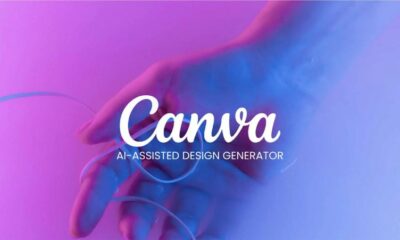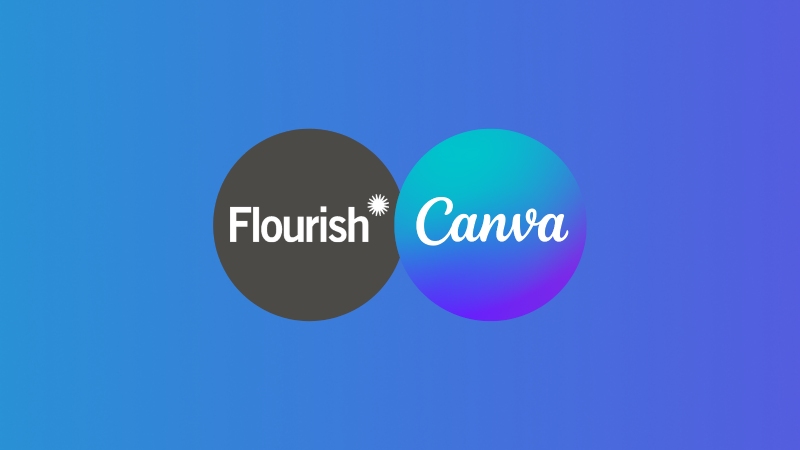Apps
Canva Launches AI-Powered Design Model and New Creative Features

On Thursday, Canva, a creative suite company, unveiled its own design model that powers its features by comprehending design layers and formats. Additionally, the firm updated its AI assistant, added new products and features, and made it possible to construct data visualization widgets using its spreadsheet tool in conjunction with its app-building feature.
According to Canva, it is introducing a core model that produces designs with editable layers and objects instead of flat images. This model is trained on its design elements. The model is applicable to a variety of formats, such as websites, social media posts, presentations, and whiteboards.
“We started by creating flat images with diffusion models. Omni models have taken that a step further, where you’re able to edit those flat images with a lot of sophistication through prompting. But the tools have made you prompt your way to the final result, which, for a visual medium, is challenging,” Canva’s global head of product, Robert Kawalsky, told.
“What we’ve found is that people . . . want the ability to start with a prompt and get far, but also be able to iterate directly themselves.”
Canva AI, an AI assistant with a chat-like interface for creating visual content from text prompts, was introduced by the firm earlier this year. This assistant is now accessible across the whole UI, including the elements and design tabs.
While collaborating on a project, users can additionally tag (@mention) the bot in comments to receive media or text recommendations. Additionally, the AI tool can now create 3D objects and replicate any design’s artistic flair.
Additionally, the company introduced a spreadsheet product and a prompt-based feature that allows customers to create mini apps. These two products are now connected, enabling users to leverage spreadsheet data to create widgets.
Earlier this year, Canva also acquired MagicBrief, an ad analytics company. Canva is introducing Canva Grow, an all-in-one marketing platform that leverages AI for both asset creation and performance analytics, using both the new measuring tool and its own creative platform. Additionally, it enables advertisers to immediately publish their adverts on platforms like Meta.
The Australian design company revealed several new features and products for its platform in addition to AI features. As an alternative to services like Google Forms, users may now create forms with Canva to get feedback from their audiences or clients.
Additionally, the company is incorporating email design into the platform so that users may build templates and layouts for transactional or marketing emails that adhere to the aesthetics of their brand.
In order to more effectively compete with Adobe, Canva acquired the professional design package Affinity last year. The company said that with this version, users will always be able to use Affinity for free.
Additionally, Canva is redesigning the Affinity interface to combine layout, pixel, and vector tools into a single interface. Affinity and Canva are intimately integrated, allowing designers to build things in the professional tool and transfer them to Canva. According to the firm, users may also use Canva AI to create designs or photos within Affinity.
-

 Business2 weeks ago
Business2 weeks agoRandy NG: Inside the Process of Managing End-to-End International Trade Operations
-

 Tech2 weeks ago
Tech2 weeks agoFrontier Galvanizing: The Critical Role Of Galvanizing In Renewable Energy And Utility Projects
-

 Business3 weeks ago
Business3 weeks agoArdavon Moayer Explains How Discipline and Teamwork Translate to Sales Wins
-

 Cryptocurrency3 weeks ago
Cryptocurrency3 weeks agoRami Beracha Asks, Can Israel Become A Global Leader In Blockchain Innovation?
-

 Education3 weeks ago
Education3 weeks agoForged in Fire: Nicholas Lawless Unveils Lawless Leadership – The Model Built for a World That Traditional Leadership Can’t Survive
-

 Business3 weeks ago
Business3 weeks agoOPO Group LTD Strengthens Its Global Footprint With Expanding Offices and a Modernized Trading Ecosystem
-

 Business4 weeks ago
Business4 weeks agoThe overlooked costs of working from home
-

 Travel5 days ago
Travel5 days agoMichael Hopkins, Denver: Rethinking the Airport Experience for Modern Travelers















